#*etiquette
Text
We ask your questions so you don’t have to! Submit your questions to have them posted anonymously as polls.
#polls#incognito polls#anonymous#tumblr polls#tumblr users#questions#polls about etiquette#submitted april 26#deodorant#etiquette
1K notes
·
View notes
Text
I feel as though in the past few years it's becoming more common for me to be interrupted while I'm speaking, and I can't help but wonder if more people are losing a sense of conversational rhythm due to communicating more and more digitally and less and less in person.
When you communicate digitally you don't have to worry about finding the natural rhythm of the conversation, you're not taking away someone else's ability to finish their thought or make their point if you send a message to them while they're still typing. I'm not here to scare monger about the kids and their phones, but it's important that you don't let your skill of finding a conversational rhythm, if you have that skill, atrophy, lest you speak over someone and take away their ability to complete their thought and make their point.
But I also realize that it's really important to specify what I mean by interrupting someone.
When someone says that interrupting is really normal and not considered rude in their community or culture, what they're actually talking about is what's known in linguistics as "cooperative overlap", that or simultaneous talking. Here's an example of cooperative overlap and/or simultaneous talking that you might see in a culture where this is normal and acceptable:
Person A: So guess where I went today? I went to the -
Person B: Oh let me take a wild guess! You went to the shoe store again didn't you?
Person A: That's right, and I got a -
Person C: Oh come on, don't tell you got another pair!
Person A: You know it baby!
Now let's compare that to a different style of interruption, what I like to call "steamrolling"
Person A: So guess where I went today? I went to the -
Person B: UGH did you guys catch the game last night?
Person C: Yeah the refs sucked!
Now, what differences can you see between the first example, aka "cooperative overlapping" vs the second "steamrolling" example?
For one, in the first example Person A is still allowed to make their point, tell their story, and finish their thought. They're not being silenced or completely derailed, and most importantly their conversation partners still seem interested and engaged in what they have to say. In the second example, Person A is being completely derailed and stripped of their chance to finish their thought and make their point, which is unfair to Person A, which is what makes "steamrolling" disrespectful even in many cultures and communities where "cooperative overlapping" would be acceptable.
Now, conversational overlap isn't for everyone, and that's okay, but it makes it awkward and tricky when someone from a community or culture that uses conversational overlap talks to someone who is from a culture that doesn't. For example:
Person A: So the other day I went to -
Person B: Oh my god did you go to that one store?
Person A: Um, no, I went to the movies, and I saw -
Person B: OH did you see that new creepy movie about the aliens?
Person A: No, can I please just finish my story?
Person B: Oh, uh, sorry
Neither person will probably feel great after this conversation. And I'm not here to condemn either conversational styles. I understand why some people see cooperative overlap as a more engaging and exciting conversational style, but I also understand why some people find it frustrating. My mother's family has a cultural background big on conversational overlap, but my father's side of the family ehhh not so much, so I personally grew up seeing these two conversational styles clash a lot.
If you're person A in the above conversation who doesn't like conversational overlap, that's totally fine, I'm personally not a big fan of it either only because I have a terrible memory, so when someone disrupts my flow I usually end up completely forgetting what I want to say. Just try to recognize the difference between cooperative overlap vs steamrolling. If someone is just trying to cooperatively overlap with you, patiently and politely tell them something along the lines of "sorry I have a terrible memory so if I don't finish I'll forget what I'm trying to say". But it's generally a good idea to be more patient and understanding with conversational overlap than steamrolling.
If you're someone who cooperatively overlaps and you encounter someone who isn't a fan of it, try not to take it personally, maybe like me they have a horrible memory and will forget what they're trying to say if they get side tracked.
But what I meant earlier about conversational rhythm is that too often a lot of interrupting comes from not realizing the other person wasn't finished speaking.
For example, personal A wants to say "so the other day I went hiking, and I saw a fox" some people might not recognize when person A is actually finished speaking, typically they assume as soon as they've heard a complete clause that means the thought is finished, so the conversation goes like
Person A: So the other day I went hiking -
Person B: OH I went hiking a few weeks ago with my girlfriend but it was so slippery out!
Person C: Oh how is your girlfriend doing by the way?
Person B: She's doing great! How's your partner doing?
Do you see how this style of interruption, unlike cooperative overlap, also derails Person A and deprives Person A of a chance to finish what they want to say? It's not quite steamrolling, and often just comes from a lack of rhythm or understanding. As a general rule, if you want to avoid interrupting someone, pause for a few seconds after you think they're finished in case they aren't actually finished. This way you avoid accidentally depriving someone of the chance to finish what they want to say and completing their thought.
We should never be too eager to assume someone has finished making their point because you never know what someone might actually be trying to say, and if you cut someone off before they make their point you can miss important context. For example:
Person A: I don't think I see stray cats here -
Person B: AHA BULL FUCKING SHIT! I totally saw a stray cat the other day!
Person A: I was going to say as much as in other places if you had let me finish?
Or:
Person A: I hate when it's hot out. When I was a kid it was usually around 25 or 30 degrees Celsius in the summers -
Person B: OH come one don't be such a wimpy little baby! 25-30 degrees isn't even that warm! I've totally seen WAY hotter summers than that!
Person A: Uh, that's what I was going to say if you'd let me finish, the summers were pretty mild when I was a kid, but they're a lot hotter now . .
Do you see how in both conversations Person B was too eager to assume Person A had finished making their point and ended up missing important context? If person B had only paused and waited for Person A to finish making their point, they wouldn't have ended up making an ass of themselves to put it frankly. This style of interruption can make you come across as eager to dominate and "one up" other people, which frankly a lot of people find obnoxious and exhausting. This is different than cooperative overlapping because it comes from a place of wanting to correct or one-up your conversation partner, rather than play and/or build into what they're saying, which is why I'd argue it's closer to steamrolling.
Good conversational rhythm ideally means everyone is allowed to finish their thought and make their point, whether or not that includes overlapping or even simultaneous talking. If you're not sure someone has finished their thought, pause a few seconds to make sure they've had the chance to complete their thought, less you miss important context. OR, if you do interject, it should be about building/playing into what they're saying rather than derailing/steamrolling them.
What's important to keep in mind is that it's often a matter of power and respect when someone is or isn't allowed to finish their thought and make their point. If someone is unable to finish their thought or make their point before getting steamrolled, they're going to feel like their input to the conversation isn't valued or important, and that's never a good feeling.
221 notes
·
View notes
Text
youtube
Watch the American Climate Leadership Awards 2024 now: https://youtu.be/bWiW4Rp8vF0?feature=shared
The American Climate Leadership Awards 2024 broadcast recording is now available on ecoAmerica's YouTube channel for viewers to be inspired by active climate leaders. Watch to find out which finalist received the $50,000 grand prize! Hosted by Vanessa Hauc and featuring Bill McKibben and Katharine Hayhoe!
#ACLA24#ACLA24Leaders#youtube#youtube video#climate leaders#climate solutions#climate action#climate and environment#climate#climate change#climate and health#climate blog#climate justice#climate news#weather and climate#environmental news#environment#environmental awareness#environment and health#environmental#environmental issues#environmental justice#environment protection#environmental health#Youtube
17K notes
·
View notes
Text
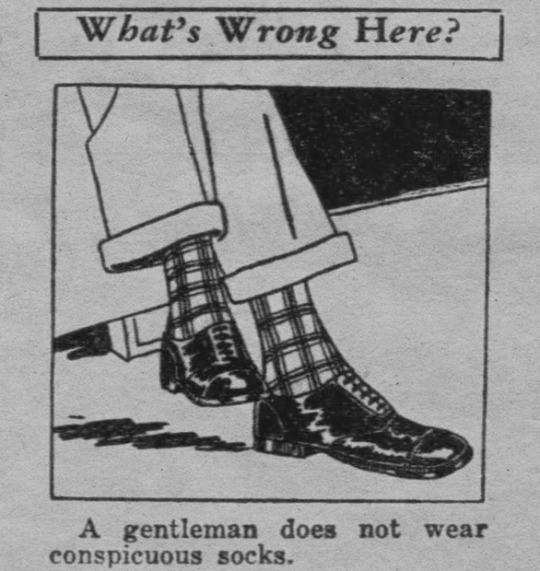
Daily News, New York, New York, June 14, 1931
95K notes
·
View notes
Text
Etiquette proposal
If you invite someone from another timezone to a teleconference, the onus is on you to present all times in their local timezone, rather than your own - that is, the person asking should bear the labor of timezone conversions, not the person being asked.
3K notes
·
View notes
Text

1K notes
·
View notes
Text
Etiquette of the Edwardian Era and La Belle Époque: Courting

This is a new set of posts focusing on the period of time stretching from the late 19th century to the early 20th Century right up to the start of WWI. I'll be going through different aspects of life. This series can be linked to my Great House series as well as my Season post and Debutant post.
I get asked a lot about courting, what's acceptable or what's off limits and how one may woo a prospective spouse. So let's explore how to win the hand and heart.
Meeting (not so cute?)
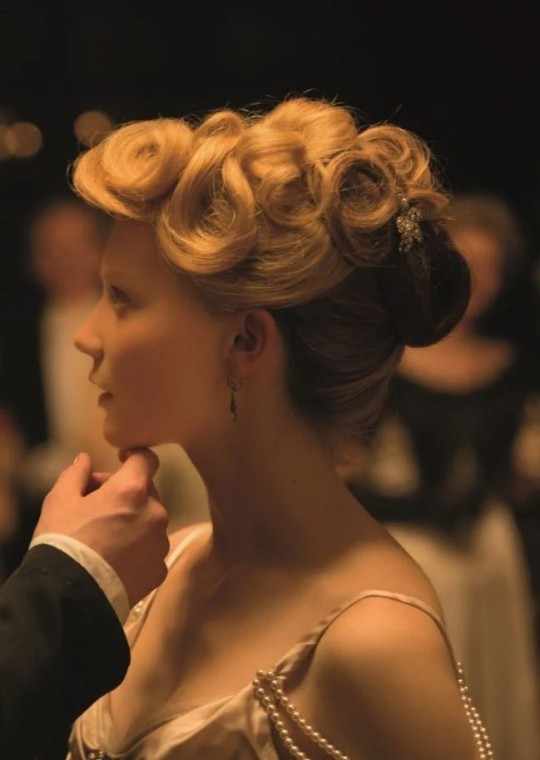
Firstly, it is really difficult to have a meet cute in the Edwardian era. Women and men are kept separate for most of the day, only really getting to meet at designated events: A dinner, a ball, a social event. Meeting in the park is a cute idea but a gentleman can't just approach a lady (or another gentleman) without being introduced by a third party, either a senior party or a mutual friend. However, an introduction at a ball is sort of like Cinderella's get up, it ceases to matter when the ball is over. Your gentleman must not approach a lady after that ball, he must be reintroduced. Once an introduction has been made, he can speak with her.
An Interest

When an introduction has gone satisfactory, a gentleman must make the first move by calling to her parents'/guardian's home and making a formal request to begin courting. Her parents/guardians must consent, usually leading to a short brief interview of the gentleman's family, his connections, his wealth (though in not so vulgar terms, they may inquire where he lives which is an indicator). The woman's opinion did matter, she could give her reasons for accepting or turning down the offer. When the interest is approved, the gentleman can start offering invitations.
Three's Company

Of course, just because the parents agree, doesn't mean the couple gets to be alone. The young lady will be accompanied by a chaperone either a lady's maid, a governess, her mother or another female relative. While the couple is together, the chaperone will always be a few steps behind or have them in sight. She's there to ensure that nothing more than a conversation happens. This is not only for her young lady's reputation but also to save the man from any claims of impropriety. The chaperone also serves as a sort of spy, gauging whether this relationship is worth pursuing.
Activities & Tokens

A gentleman may invite a lady out to lots of different activities. He can invite her for a promenade at a local park or gardens, out the theatre, visit her at home, invite her to galleries, to balls or to be his companion at sporting events such as the races, tennis matches or boat races. When visiting in the house, the gentleman would be expected to speak with all the family, be polite and courteous. This is how the family guages his suitably. The gentleman must provide transportation and funds for any excursion. Gifts are to be refined as well. Expensive gifts are considered vulgar and will likely be turned down. Small gifts such as flowers, books, cakes are acceptable. Gifts aren't as important as the time spent together.
Rules of Engagement

There are certain unspoken rules surrounding courtship that every gentlemen must follow for a successful courtship:
A gentleman should always pay attention to his lady, and not exclude her or cast her off for others
A gentleman never smokes in front of his lady nor forget to remove his hat.
A gentleman must always offer to refresh his lady on an excursion
A gentleman must defend his lady from any offense be it an insult or a scene unfit for her eyes or within an argument. Throwing in an apology for any offense can add a cherry on top.
However if she's the one giving offense, without any reason, the gentleman must seek to create peace, apologising on her behalf.
When walking, a lady will be placed in the inside of the pavement.
A gentleman should never spend above his means to impress his lady. Staying within his means is not only smart but a show of restraint and a glimpse of what life ought to be if they marry.
A gentleman should always offer his assistance when a lady is exiting a carriage or going up a flight of steps or carrying anything heavy.
If a man accompanies a woman to a ball, he's expected to dance with her on her first and last dances of the evening.
A gentleman must always make his intentions known and not string a lady along with no intention of marriage. He must never joke about his intentions or lead her on.
Marriage

Courtship usually promises marriage which is why a gentleman or lady should not enter into courtship unless they would consider marriage. Courtship may last a few months or a few weeks and while it is going on, both sides should consider whether marriage would be a viable option of either of them. Parents/guardians would be consulted, the gentleman must make his intentions known to her father or nearest male relative before approaching the lady and popping the question. A courtship that doesn't end in marriage is seen as a failure and may damage the reputation of both parties, leading people to wonder what happened and who is to blame. For example is a perfectly eligible gentleman will not marry a perfectly eligible lady or she turns down his offer, people will usually leap to the conclusion that there is something lacking.
LGBTQIA+ Courting


Gay people have always been here. They have courted and they have loved. Whilst it was illegal in this time in many parts of the world, love did prevail. (fun fact: lesbianism wasn't illegal because nobody wanted to explain what it was to Queen Victoria). The good thing to know is that courting whilst gay was likely easier in this period. Whilst there were restrictions and rules for straight couples and chaperones haunted their every step, none of this would happen if two people of the same gender stepped out together. Two gentleman going to the opera together or dining at a restaurant or attending a ball together (dancing in public was unlikely) or two ladies promenading in the park or attending a concert would not be examined like a courting couple. They would have more freedom to move around but of course, with legal impediments PDA was kept a minium. Whilst they wouldn't be allowed to marry legally, there was little stopping couples from moving in together. Nobody would say much about two spinsters sharing a home or two bachelors crashing together
#Etiquette of the Edwardian Era and La Belle Époque Courting#Courting#Courtship#The Edwardian Era#belle epoque#The gilded age#Edwardian#Etiquette#Fantasy Guide#Writing guide#Writing resources#Writing resource#Writer resource#Writer's resources#Writing reference#Writer reference#Writer's reference#writing#writeblr#writing resources#writing reference#writing advice#writer#spilled words#writers
716 notes
·
View notes
Text
youtube
Watch the 2024 American Climate Leadership Awards for High School Students now: https://youtu.be/5C-bb9PoRLc
The recording is now available on ecoAmerica's YouTube channel for viewers to be inspired by student climate leaders! Join Aishah-Nyeta Brown & Jerome Foster II and be inspired by student climate leaders as we recognize the High School Student finalists. Watch now to find out which student received the $25,000 grand prize and top recognition!
#ACLA24#ACLA24HighSchoolStudents#youtube#youtube video#climate leaders#climate solutions#climate action#climate and environment#climate#climate change#climate and health#climate blog#climate justice#climate news#weather and climate#environmental news#environment#environmental awareness#environment and health#environmental#environmental issues#environmental education#environmental justice#environmental protection#environmental health#high school students#high school#youth#youth of america#school
17K notes
·
View notes
Text
Social Etiquette 101
Do not manifest impatience. Be present in the conversation.
Do not engage in argument.
Do not interrupt someone else while they are speaking.
If you must, gently critique.
Do not talk of your private, personal or family matters.
Do not appear to notice inaccuracies of speech in others.
Do not allow yourself to lose your temper or speak excitedly.
Do not allude to peculiarities of the people present.
Do not introduce topics the people you are with have no general interest in.
Do not speak loudly.
Do not try to force yourself, or be intense, into the confidence of others.
When they give you their confidence, don't betray it.
Keep it light. Do not aspire to be a story teller. Tell short, light stories, appropriate with the current temperature of the rest of the party involved.
Use clear, distinct, gentle and firm words to express your ideas.
Be cool, collected and poised, using respectful and appropriate language.
Always defend the absent person who is being spoken about, as far as truth or justice is concerned. If you have nothing positive to add, leave the conversation.
Allow other people to share.
Don't talk about yourself so much. Your merit will be found in your expression of a subject without having to constantly praise yourself.
Slight mistakes and inaccuracies should be overlooked for the sake harmony and natural flow.
Adapt your conversation to the flow or level of the people you are speaking with. Do not under or over value them. Speaking to them how they understand, will provide more trust and comfort.
#elegant woman#elegant#social etiquette#level up journey#glow up#feminine energy#divine feminine#divine female#femininity#classy#etiquette#manners#high value woman#high value mindset
4K notes
·
View notes
Text
#poll#etiquette#I would've liked to be more specific than just USA and Not but I only have so many poll options
348 notes
·
View notes
Text
"update when—"
"please tag me in the next—"
"omg! fic when—"
"please don't tell me that was it—"
"please please more—"
"i want more—"
"part 3 when—"
"when's the next part—"




#what's in the picklejar#can y'all just... not?#like... seriously#it's almost always going to come from someone who couldn't be bothered to hit the reblog button#but i guarantee they spent the entire day of April 1st booping the ever-loving shit out of every blog they came across#y'all make me fucking sick#fr fr#🚮#writers are not content machines#we're human beings#please shut the fuck up#etiquette#fandom etiquette#fandom culture#writing problems#fanfic writers#fandom things#archive of our own#fanfic writing#fanfiction#fanfic#fandom wank
210 notes
·
View notes
Text
Edwardian etiquette with Edwin Payne.
This guide promises to cover why Edwin's posture is always straight and not slouched, why he barely does physical touch (but we see that evolve), and some of his mannerisms and vocabulary.
It also includes a whole late Victorian/ Edwardian dictionary here if you want to learn some old lingo.
However, it does not include instructions on how to tango nor on how to write postcards, two things that people in the Edwardian era loved to do.



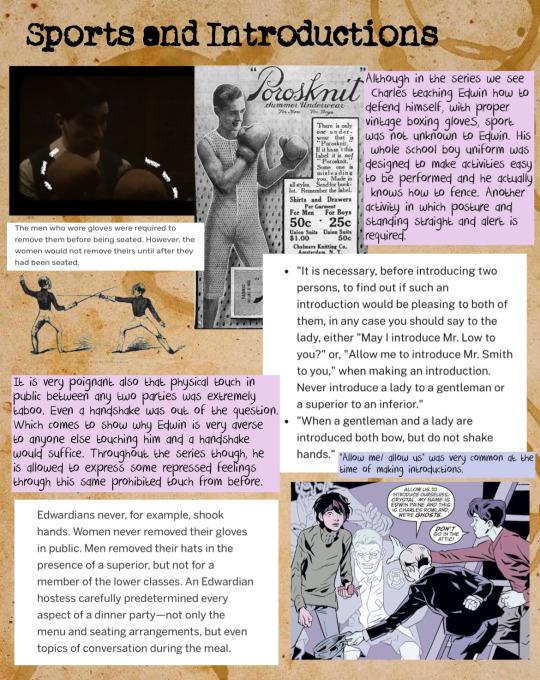
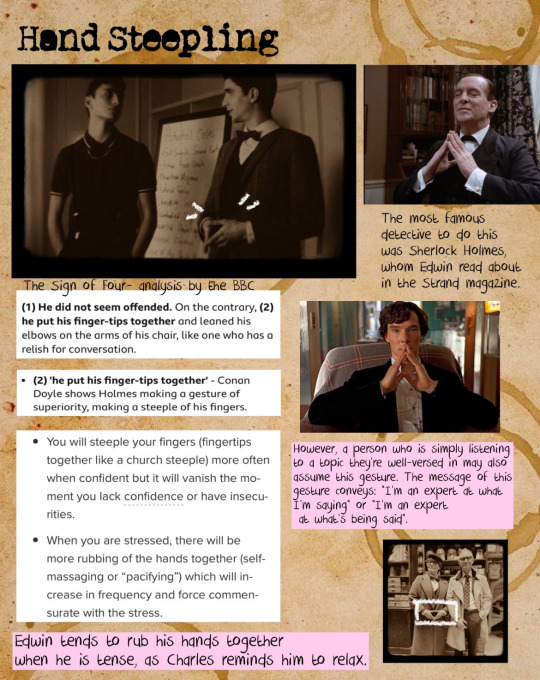
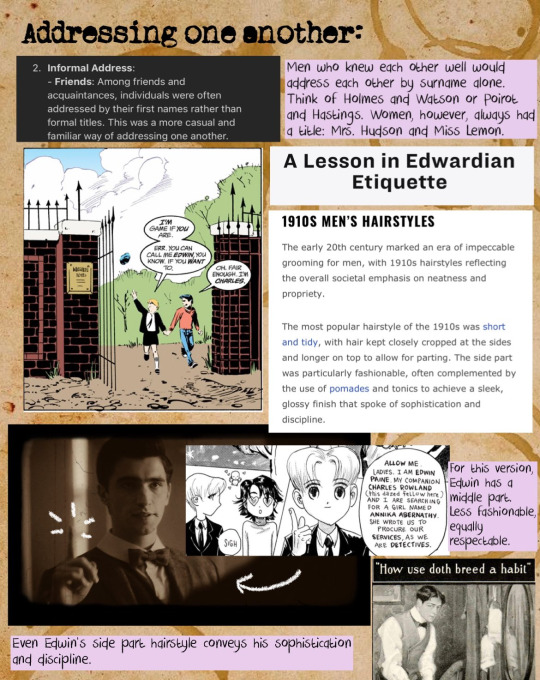
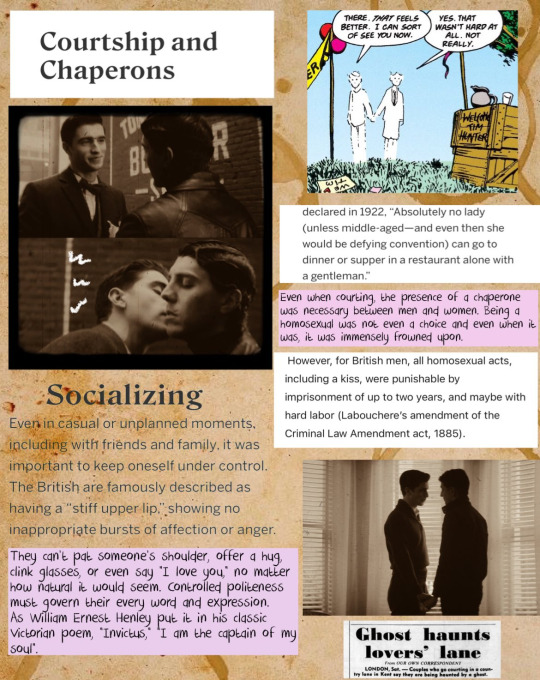
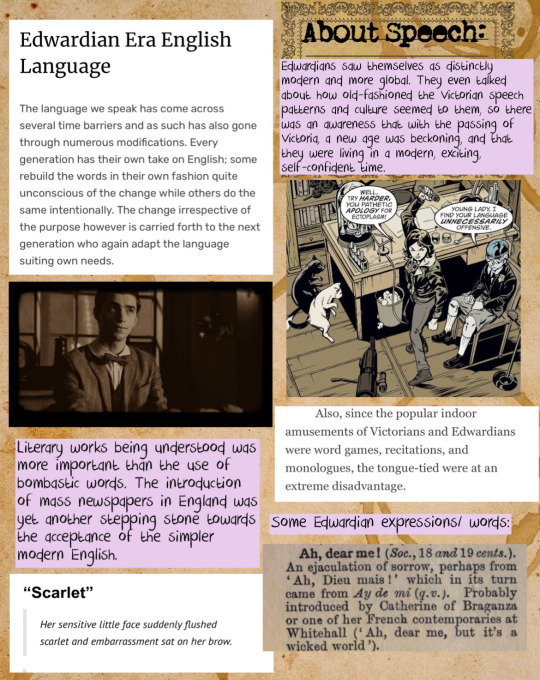


#edwin payne#george rexstrew#charles rowland#dead boy detective agency#dead boy detectives#dbd#jayden revri#edwardian#etiquette#manners#detectives#neil gaiman#steve yockey
179 notes
·
View notes
Text
Femme Fatale Playbook: How To Look More Expensive & Elevate Your Aura
Looking expensive or 'rich' is all about investing in yourself, your appearance, how you carry yourself, and not shying away from signature details or indulgences. Here are some tips to level up your look and demeanor to feel high-class in your daily life – no matter how much money you want to spend in these life arenas.
Appearance:
Prioritize Proper Grooming: Always looking clean and put-together is the ultimate sign of class. Shower daily. Brush, and take care of your teeth. Wash your hair on a regular schedule. Never allow your hair to look greasy – brush and blow dry it regularly. Cleanse, exfoliate, and moisturize every inch of your face and body. Perform your skincare routine religiously. Apply sunscreen daily.
Tailor & Steam Your Clothes: Freshly-pressed and well-fitting clothes always look infinitely more expensive – no matter their price point. Looking rich and expensive is about high self-regard and paying attention to the little details. Ensure your garments look crisp and clean – no wrinkles, pet hairs, loose threads, lint pieces, or fabric bulges highlighting an improper fit.
Create A Classic & Streamlined Capsule Wardrobe: Simplicity radiates a chic sophistication. Go back to the basics with timeless pieces – like a button-down blouse, a classic crewneck sweater, black trousers or straight-leg jeans, leather pants, a leather jacket, a trench or wool coat, a well-fitting cami or tee shirt, a simple slip dress, or a knit set. Focus on a neutral color palette – black, champagne, dark grey, chocolate brown, camel, or crisp white shades. Seek out elevated fabrics – such as Pima cotton, cashmere, washable silk, and buttery vegan or recycled leather.
Invest In Signature Pieces: Spend on "outer shell' items – coats, jackets, heavyweight knits, handbags, and shoes – that directly interact with the outside world and can be worn repeatedly with almost every outfit. Save on items like tee shirts or more simple jewelry pieces that can be found for less while still being fairly high-quality. I recommend Everlane, Lilysilk, and Naadam for affordable basics (Frankie Shop, Skims, and Norma Kamali for moderately priced pieces) and Catbird and Oma The Label for well-priced accessories. Here are all the everyday essentials you need to build the ultimate Femme Fatale Wardrobe.
Simplify Your Beauty Routine: Fresh, clear, and glowy skin radiates rich girl energy. A well-curated skincare routine should do half the heavy lifting. However, you will probably want to include a shade-matched foundation, concealer, and powder into your makeup routine along with a bronze contour, a rosy blush, and a subtle highlighter. Shape and fill in your brows for a polished look. Apply a deep black mascara to your lashes and luscious black eyeliner to your top lid, waterline, and tight line – keep the strokes thin and crisp (create a subtle wing if desired). Finish your face with a deep pink nude, red, or deep wine lipstick/gloss/lip tint. Here's a guide to the ultimate Femme Fatale Beauty Routine for a completely elevated (and sensual) look.
Eat Healthfully & Workout: Health is wealth. Taking care of your body shows self-respect – your most priceless asset. So, incorporate whole, plant-based foods into your daily diet and make it a priority to find movement you love that you can incorporate into your routine multiple times a week.
Lifestyle:
Streamline The Details: The rich girl aesthetic is all about refinement and looking put together at all times. Always have a set of matching pens with coordinating notepads on your desk, a uniform set of coffee mugs on the counter, coasters, glassware, sheets, pillowcases, cold-weather accessories, etc. This attention to detail instant makes your environment look more expensive.
Have Personalized Stationery: A high-value woman isn't shy about leaving her signature touch. Have personalized stationery (thank you notes, greeting cards, business cards, etc.) monogrammed and on hand for anytime you need to send a note or gift to a friend, coworker, boss, client, etc. This addition shows your attention to detail, leaves the recipient something small to remember you by, and adds a human touch to any gift or gesture. Try gold lettering on cream cards for an elegant, expensive look.
Keep Prosecco & Sparkling Water On Hand: Bubbly on a budget feels just as expensive as champagne (and tastes great too). Sparkling water elevates your daily H20 – add some lemon, lime, orange wedges, or frozen berries for a fancy, fruity twist.
Have Proper Place Settings: Neat, thoughtful presentation exudes class and rich energy. Whenever hosting any type of sit-down event or cocktail party, have the plates stacked, glasses and cutlery arranged correctly. Have all of the appropriate utensils readily available. Again, it's all about the details.
Stay Informed & Well-Read: A thirst for knowledge, learning and having the ability to engage in thoughtful, informed, and intellectual imbues a high-class radiance into any room. Read books, learn about different cultures and current events, and invest in studying different industries, and interests. Explore your hobbies. A rich mindset translates and generates an overall elevated aura.
Demeanor:
Learn Proper Etiquette: Address people by name, and offer a firm handshake. Maintain eye contact. Say "please" and "thank you." RSVP promptly. Communicate clearly and compassionately.
Maintain Good Posture: Shoulders back and relaxed. Open your chest. Keep your back straight and your head held high. Take up space. Command presence.
Master The Art of Engaging Conversation: Prioritizing self-presentation, learning how to listen, holding your own, and encouraging others to feel relaxed are the secrets to becoming magnetic in any social situation. Read more of my tips HERE.
Embrace An Abundant Mindset: Free your mind of limiting beliefs and notions of scarcity. There are plenty of opportunities, experiences, and emotions to go around. Another person's success doesn't take away from your potential. Focus on expansion, not envy.
Remain Confident & Unbothered: Believe in yourself. Invest in your well-being. Prioritize your goals and block out the noise from anyone trying to tear you down or criticize you for your ambition, goals, or desires. Stay in your own lane. Allow others to do the same. This is how you level up to elevate into your queen energy to create a rich life and design your dream reality.
#femme fatale#dark femininity#it girl#the feminine urge#high value woman#dark feminine energy#hypergamy#hypergamous#high value mindset#divine feminine#female manipulator#rich girl#old money#etiquette#upper class#self improvement#level up#glow up#higher self#ideal self#dream girl#that girl#queen energy#female excellence#success mindset#social skills#life advice#femmefatalevibe
3K notes
·
View notes
Text
We ask your questions so you don’t have to! Submit your questions to have them posted anonymously as polls.
#polls#incognito polls#anonymous#tumblr polls#tumblr users#questions#polls about etiquette#submitted april 27#clipping nails#etiquette#hygiene
156 notes
·
View notes
Text
"Talking over people can be a hard habit to break, particularly if it’s part of your common methods of communication.
There are some legitimate reasons why people develop this habit. People that come from cultures or families that are generally loud and compete for the speaking floor get used to functioning in that environment. If you don’t talk loud and elbow your way into the conversation, then you just don’t get heard.
But that kind of communication doesn’t work in a more polite society or the workplace. Talking over other people can be seen as rude, dismissive, and disrespectful to those who aren’t used to that communication style.
Interrupting can also make quieter people feel excluded and unimportant, which isn’t really how you want people to feel in a good conversation.
9 Ways To Stop Interrupting People
1. Practice active listening.
Active listening is focusing intently on what the speaker has to say until they finish their thought.
Many people do not practice active listening. Instead, they skim the speaker’s words while trying to think of the next thing they want to say. This is a problem for a couple of reasons. First, they’re not really listening and may miss important context or statements that the speaker is making. Second, it makes the listener appear as though they are not engaged in the conversation.
And that second point is especially bad if you happen to be talking to the boss or having a sensitive conversation with a loved one. You don’t want to appear to be disengaged or uninterested.
Try to avoid thinking about what you want to say while the other person is thinking. Instead, quiet yourself and just focus on their words.
2. Pause for 10 seconds before speaking.
Sometimes we interrupt other people due to miscues in the flow of conversation. These cues can be easy to miss if you aren’t practicing active listening because they are often subtle. The speaker may have paused for dramatic effect, comedic timing, or just to gather their thoughts before they continue.
A good way to stop interrupting people is to simply take ten seconds between the time they stop speaking and you start speaking. It might feel awkward, but you can always explain this away as you were just thinking about what was being said, which you should be doing anyway.
That pause will also give you a little additional time to read the speaker and look for conversation cues for them, like if their facial expression denotes thought or a joke.
3. Purse your lips or cover your mouth.
Perhaps you need an active reminder to help stifle the impulse to talk over other people. You can do that by pursing your lips or adopting a posture where you can cover your mouth. Pursing your lips helps because it’s common body language for being in thought. The person you are speaking to will interpret that as you thinking about their words.
You may also find it helpful to rest your chin in your hand and put a finger over your lips, circumstances allowing. That would be fine in a personal conversation but will probably look a little off in professional conversations or meetings.
Either way, it’s a physical reminder to stop yourself from talking over people who haven’t finished what they have to say.
4. Repeat their statement back when appropriate.
When communicating with another person, a common piece of advice is to repeat their point back to them in your own words to show that you understand what they are saying. This can be a helpful piece of advice for not interrupting or talking over people because it forces your mind to stay focused on the speaker.
This is most helpful in a personal conversation where the other person expresses something of deep importance. Like, think of when a friend is having a hard time, or maybe you’re having a discussion with your boss about a work responsibility.
5. Allow the speaker to continue if you do interrupt.
You’re going to mess up. You’re going to fall back to that old habit and interrupt someone sooner or later. It’s okay! Really. No one is perfect, so don’t expect yourself to be either.
Stop yourself when it happens. Just say, “I’m sorry for interrupting, please go on.”
The habit of making that apology will help you maintain better control over when you decide to interject into the conversation. And it has the added benefit of communicating to the speaker that you realize you made an error, are apologetic, and give them back the floor to continue speaking.
6. Make notes if you are in a work setting or group conversation.
In a work or group setting, it is helpful to carry a small notebook with you. That way, you can jot down notes and thoughts you have about what’s being said to revisit later. Some people interrupt because they are afraid they will forget their question or point. The notebook is the solution to that problem.
Plus, it’s helpful to collect these thoughts and notes for when you get to the end of the presentation. You may find that your question was already answered or your points covered by the end.
7. Acknowledge your interruption if you need to make one.
There are times in conversations when you need to make an interruption. Perhaps there is a bit of misinformation being shared that you need to correct. In that scenario, just limit yourself to providing the appropriate context or information required for the comment.
“I’m sorry to interrupt you, but…”
Make your point, and then step back out of the flow of conversation.
An interruption is sometimes necessary.
8. Ask a friend to help you.
Changing a habit can be hard work. You can make the job easier by enlisting the help of a trusted friend or family member. Have them keep an eye on you and just give you a little nudge or inform you when you’re interrupting, so you can better avoid it.
After the conversation is over, they can just tell you, “Hey, you interrupted John while he was talking about his trip.” That way, you can acknowledge it with yourself if you feel it slipped under your radar.
9. Practice with a partner.
A great way to change any habit is through regular practice. You can practice not interrupting with the help of a friend by just asking them to talk about a thing. Suggest they talk about something with their work, an event in their life, or a situation they had to deal with. Then, take that time to actively listen to what they have to say, work on your own internal narration, and stop the triggers that cause you to talk over people.
Make it clear that you are asking for help with this specific problem and may not be entirely invested in the conversation. You don’t want your friend to be pouring their heart out to you, and you’re not paying attention because you’re thinking about how you speak.
Keep practicing. Keep working on listening and just being quiet when other people speak. The more you work at it, the easier it will be to ditch that interrupting habit and be a quality conversationalist.
Frequently Asked Questions (FAQs)
Why is interrupting people rude?
In many cultures, interrupting people is rude because it shows disrespect to the person speaking and the point they are trying to make. People like to express themselves and feel heard by those they are talking to. To interrupt is to deny them that right.
What are the consequences of interrupting people?
If you regularly interrupt someone, it might make them pull away from you or not want to talk to you. After all, if they can’t say what’s on their mind without you jumping in every five seconds, they’ll look for someone else with whom to share their thoughts, their news, or their worries.
Nobody wants to feel like they are part of a one-sided conversation where only what you have to say matters enough to be listened to.
Talking over people is also a problem if you are being given instructions. You may think you know what someone wants you to do, but unless you listen to their words carefully, you are likely to make errors or not doing things the way they want them done. This can lead to trouble of all sorts, especially in work situations but also when it comes to helping out a friend or partner.
Interrupting people can make you seem arrogant, rude, self-centered, and uncaring. These are not qualities you would wish to convey to others because they lead to weaker relationships and destroy the relationships you have already built up.
What does it feel like to be interrupted during a conversation?
When someone interrupts what you are saying, it can feel like what you have to say isn’t important. This can extend to feeling like nothing you have to say is important if someone in your life like a partner or parent always talks over you.
When you don’t feel heard, you may feel unloved or not respected. It can also make you feel powerless if the other person disregards your opinions and makes choices for you.
Being interrupted can also lead to feelings of anger and annoyance. It can cause ill-feelings toward the person who interrupted you that last well beyond the conversation."
#again I might not 100% agree with everything here#but there's still some good points being made#manners#good manners#courtesy#etiquette#politeness#submission
41 notes
·
View notes
Text

Daily News, New York, September 7, 1925
4K notes
·
View notes
Text

#Here are Three Excuses You Can Use For Pushing That Guy INto a Big Ol’ Water Barrel#excuses#etiquette#not saying he had it coming#but on the other hand#also don’t push people into barrels#water#acid#or otherwise
248 notes
·
View notes
Text
Table Etiquette
A crash course on fine dining/ being invited to dinner at someone’s place. Even if you don’t fine dine, I’d recommend you start practicing these habits in any establishment so that they come to you naturally.
Remember : A typical four-course meal consists of a soup, an appetizer, an entrée, and dessert.
If you’re standing at some sort of a networking session/ mixer:
Keep at least one hand free. If you are standing, have only a drink or food in one hand, never both. Hold a drink in your left hand so that you have a clean hand for a handshake. You can eat and drink while sitting, but it is always better to stand and greet.

Sitting/ dining out/ invited to dinner:
1. Wait to be seated by the staff/ host.
2. Napkin on your lap the minute you sit down at the table.
3. if you're looking at the menu, make sure to have the bottom, or at least one part of it, still touching the table, even if your impulse is to bring it closer to your face. Don’t lift the menu off the table to your nose.
4. Once you sip from a glass, you must sip from the exact same place on that glass for the rest of the evening.
5. If there’s a breadbasket and butter on your table - don’t dip the bread in the communal butter plate. Take a piece of the butter with your butter knife, put it on the side plate, then spread that butter on your bread. Don’t double dip! Your bread plate is the one on your left, by the way. And your glass will be on your right.
6. If your table has a lot of silverware - start from the outside and work your way in.
7. Dishes should be passed in a counter-clockwise flow. Don’t reach across the table.
8. Lay you fork and knife diagonally across the plate, side by side, pointing at 10:00 and 4:00 on a clock face. This signifies to the wait staff that you have finished.
9. Keep the rim of your plates as clean as possible, as a sign of respect to the staff.
Cultural differences:
1. Whilst eating Indian food/ in India, always eat with your right hand. The left hand should never touch the food. This is also seen in the Arab world - use only the thumb, index finger and middle finger to pick up food.
2. In Korea, one waits for the senior most person in the room to sit and eat, and is followed suit. Sharing is caring - food is often ordered to share with each other rather than individual plates.
3. Chopsticks etiquette (general): don’t stick and leave your chopsticks in your food perpendicular to the table, it signifies death. Don't set your chopsticks down pointed at another person at the table. Don't point your chopsticks at other people around the table.
4. France: bread on the table is meant to accompany the main dish, not as an appetiser.
What are some table manners that one should keep in mind if they’re eating food/ eating with someone of your culture?
#c suite#powerful woman#strong women#ceo aesthetic#personal growth#that girl#productivity#q/a#getting your life together#balance#etiquette#food#drinks#table manners
660 notes
·
View notes